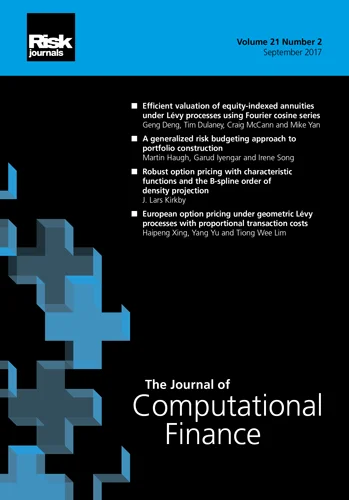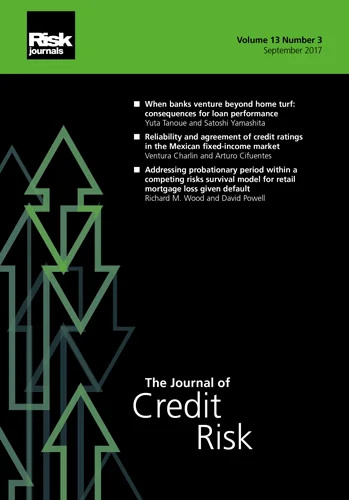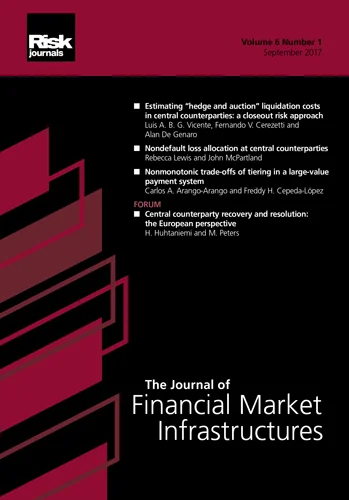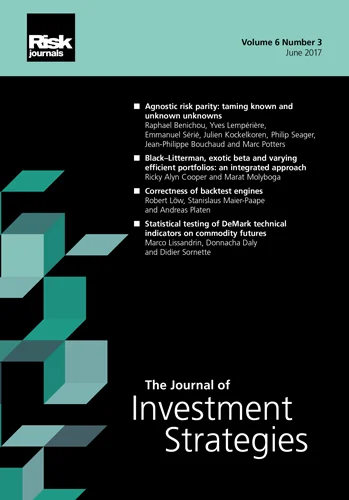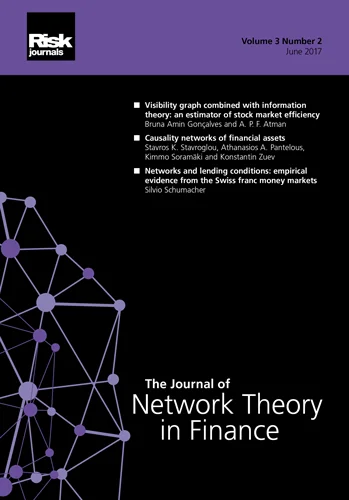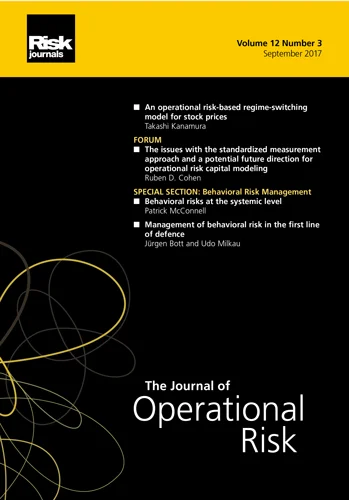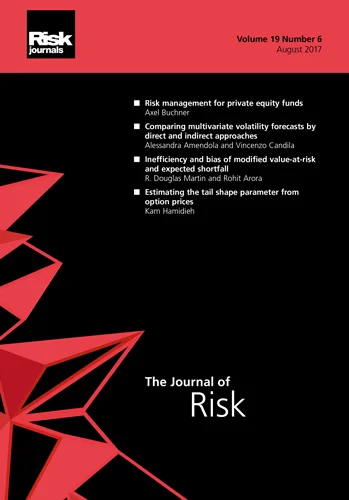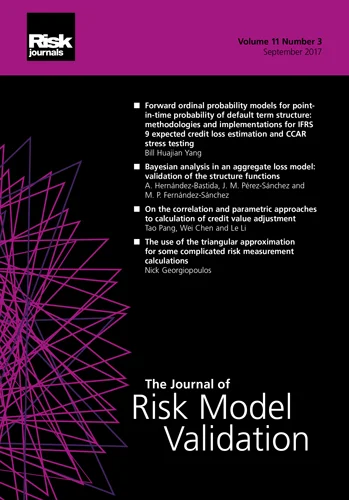Journal of Investment Strategies
ISSN:
2047-1246 (online)
Editor-in-chief: Ali Hirsa
About this journal
The Journal of Investment Strategies is dedicated to the rigorous treatment of modern investment strategies; going well beyond the “classical” approaches in both its subject instruments and methodologies. In providing a balanced representation of academic, buy-side and sell-side research, the Journal promotes the cross-pollination of ideas amongst researchers and practitioners, achieving a unique nexus of academia and industry on one hand, and theoretical and applied models on the other.
The Journal contains in-depth research papers as well as discussion articles on technical and market subjects, and aims to equip the global investment community with practical and cutting-edge research in order to understand and implement modern investment strategies.
With a focus on important contemporary investment strategies, techniques and management, the journal considers papers on the following areas:
- Fundamental Strategies: including fundamental macro, fundamental equity or credit selection
- Relative Value Strategies: estimation of and investing in the relative valuation of related securities, both vanilla and derivatives
- Tactical Strategies: strategies based on forecasting of, and investing in, patterns of market behavior, such as momentum or mean reversion, and tactical asset allocation strategies.
- Event-Driven Strategies: strategies based on the forecast of likelihood of market-moving events or market reactions to such events
- Algorithmic Trading Strategies: models of market microstructure, liquidity and market impact and algorithmic trade execution and market-making strategies
- Principal Investment Strategies: investment strategies for illiquid securities and principal ownership or funding of real assets and businesses
- Portfolio Management and Asset Allocation: models for portfolio optimization, risk control, performance attribution and asset allocation
- Econometric and Statistical Methods: with applications to investment strategies
Abstracting and indexing: Clarivate Analytics Emerging Sources Citation Index; EconLit; EconBiz; and Cabell’s Directory
Journal Metrics:
Journal Impact Factor: 0.2
5-Year Impact Factor: 0.2
CiteScore: 0.3
Latest papers
Technical trading versus buy and hold: a framework using common indicators in the US stock market
The author proposes a technical trading framework which incorporates trend-following, conditional active trading, stop-loss mechanisms and trading volume in formulating strategies
Navigating investment choices: determinants of corporate investment strategies in Japan’s nonfinancial sector
Focussing on Japanese nonfinancial firms, the authors investigate which factors, such as interest rates and stock price, influence investment strategies.
The role of Indian equity exchange-traded funds in diversified portfolios: a risk-adjusted performance analysis
The authors evaluate how Indian equity ETFs perform relative to US and global benchmarks between 2008 and 2023.
During a health crisis should you invest in gold or oil?
Employing advanced econometric models, this paper analyzes the volatility behavior of gold and oil prices during the Covid-19 pandemic.
Charting the landscape of short selling: an infometric study shaped by market sentiments
The authors aim to clarify the formulation of short-selling scenarios by providing a comprehensive bibliometric review of research in areas surrounding the topic.
Do earnings events reset the trading clock?
This paper uses a large number of earnings events from which the subset of outcomes for which the price strongly increased or declined into the earnings date.
Investment decisions driven by fine-tuned large language models and uniform manifold approximation and projection-supported clustering and hierarchical density-based spatial clustering
The author proposes an investment strategy using LLMs and text from social media posts and business and economic news and demonstrate that the strategy outperforms the chosen benchmark.
Timing minimum-variance investment in the Canadian stock market
This paper proposes a novel explanation of the variation in idiosyncratic volatility anomaly return and its use in minimum-variance investing in the Canadian stock market.
Examining intersector risk synchronization in the Indian stock market: evidence from a time-varying connectedness approach
The authors investigate volatility spillover across the Covid-19 pandemic, Russia-Ukraine conflict and the collapse of Silicon Valley Bank and demonstrate how different sectors act as shock absorbers and transmitters.
Advanced visualization for the quant strategy universe: clustering and dimensionality reduction
The authors present a novel visualisation model, based on 5000 quantitative investment strategies, which can identify nonlinear relationships and clustering strategies with similar risk factor exposures.
Using option prices to trade the underlying asset
The authors propose strategies with which to trade the underlying assets of options based on large data sets generated by options trading.
Assessing the efficiency of pure-play internet banks in South Korea, Japan and China with data envelopment analysis
The authors investigate the efficiency of pure-play internet banks in China, Japan and South Korea, recommending they focus on the management of noninterest expenses and income to ensure stable profts.
Unaligned exchange traded funds: risk-adjusted performance and market-timing skills
The authors compare the performance of unaligned exchange-traded funds with US and global equities, finding a significant positive correlation in monthly returns.
Delving into the investment psyche: investigating the determinants influencing individual investors’ decision-making
The authors investigate five cognitive biases and how they impact investment decisions, using data from 400 investors to determine which factors are significant factors in the making of investment decisions.
Formulations to select assets for constructing sparse index tracking portfolios
The authors put forward methods to chose assets for sparse index tracking portfolios and demonstrate the tracking performance with numerical examples.
An entropy-based class of moving averages
The author proposes a family of maximum-entropy-based moving averages with a framework of a moving average corresponding to a risk-neutral valuation scheme for financial time series applied to generalized forms of entropy.
Does investors’ sentiment influence stock market volatility? Evidence from India during pre- and post-Covid-19 periods
The authors use data from during the Covid-19 pandemic to investigate the impact of investor sentiment on equity market volatility, finding negative news to have a stronger impact that positive news of the same magnitude.
Luxury watches: a viable alternative investment or mere speculative trend? An analysis of two decades before the pandemic
The authors analyse the investment performance of collectible watches for the period 1999 - 2020, finding they outperformed the S&P 500 index and other luxury collectible goods.
Examining sustainability investments and financial performance of football clubs: an empirical analysis
The authors investigate how sustainability investments, financial leverage and growth rates impact the stock rate returns of football clubs.
Securities and Exchange Commission Form 13F Holdings Report: statistical investigation of trading imbalances and profitability analysis
The authors argue that trading against SEC Form 13F-HR imbalances can prove a profitable strategy due to the inflation of related asset prices.
